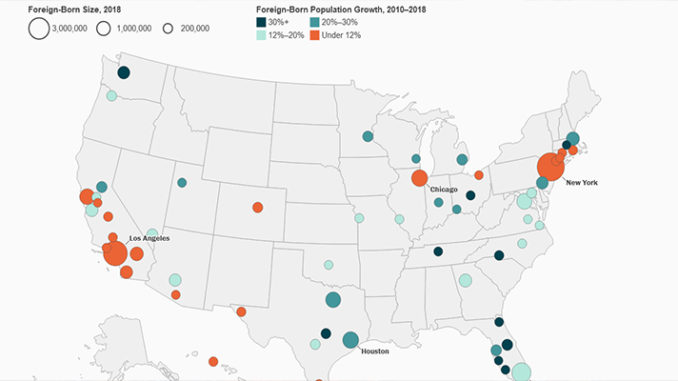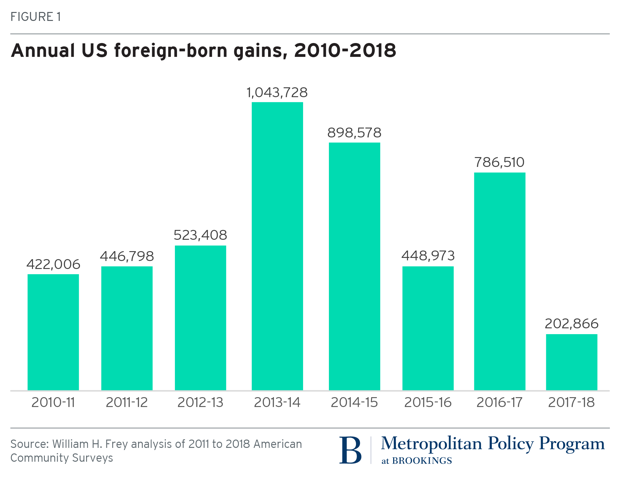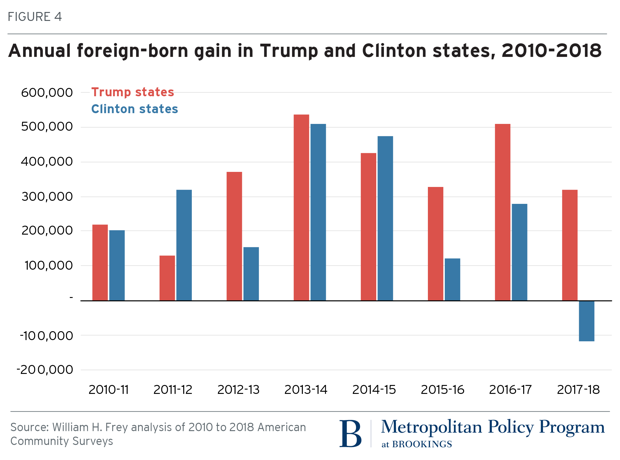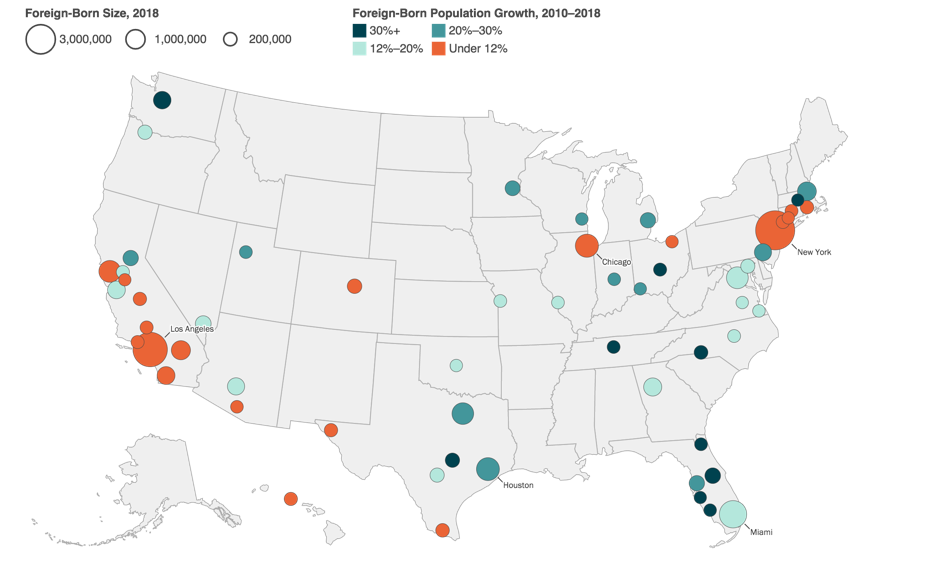
The foreign-born population has declined in U.S. states that voted Democratic in 2016, and increased in states and metros that voted for Trump.
by Richard Florida
Those are some of the key takeaways from a new analysis of American Community Survey data by Brookings Institution demographer William Frey, a leading expert in the geography of immigration.

America’s foreign-born population grew by slightly more than 200,000 people in 2017-18, the smallest increase yet since 2010. In other years this decade, the foreign-born population increased by more than twice that amount; in 2013-14, it grew by more than 1 million people, or roughly five times the 2017-18 increase.

The largest recent immigration gains have been concentrated in states and metros that backed Trump in the 2016 election. In 2017-18, in Trump states, the immigrant population surged by nearly 300,000, whereas it declined by more than 100,000 in states that voted for Clinton. Metros in the South and Rust Belt saw the biggest gains, while some large coastal metros on the East Coast, plus the San Francisco Bay Area, Los Angeles, and Chicago, saw considerable declines. Frey writes:
[T]he new “21st century immigration” is trending away from states that voted for the 2016 Democratic candidate, Hillary Clinton, toward states that voted for Trump. … In fact, over the last year, Clinton states, as a group, registered declines in their foreign-born populations—including substantial declines in New York and Illinois—and more modest declines in California, New Jersey, and Maryland, among other states. Meanwhile, Florida and Texas exhibited significant gains, as did other Trump states including Arizona, Pennsylvania, and Ohio.

The new pattern of immigration also represents a shift to more highly educated immigrants. Frey notes that college graduates made up more than 60 percent of the net gain in foreign-born adults (over the age of 25) between 2010 and 2018; they are just one-third of native-born Americans.
Immigration has become more Asian and less Hispanic, as well. Latin Americans represented the lion’s share of new U.S. immigrants before 2010, but since then, the share of Asians has risen. As Frey notes, since 2010, people of Asian and Latin-American origin make up identical shares (40 percent) of the immigrant population. Immigrants from India and China have contributed most to the gain in foreign-born population, while Mexican immigrants (still the largest country-of-origin group) have posted recent declines.
The overall picture is hardly good. Despite the shift to more highly educated adult immigrants, America continues to see significant declines in international students coming to its universities and colleges. Immigrants make up a disproportionate share of leading scientists and founders of high-tech companies. Current and future generations of such foreign-born talent are either staying at home or choosing more open countries, like Canada. Not to mention that immigration has been the main driver of population growth in many large U.S. metros as the birth rate falls.
If the government’s clampdown continues, America will lose more than immigrants. It will sacrifice a good deal of its competitive advantage in science and technology, and miss out on more economic growth.
Richard Florida is a co-founder and editor at large of CityLab and a senior editor at The Atlantic. He is a university professor in the University of Toronto’s School of Cities and Rotman School of Management, and a distinguished fellow at New York University’s Schack Institute of Real Estate and visiting fellow at Florida International University. @Richard_Florida



